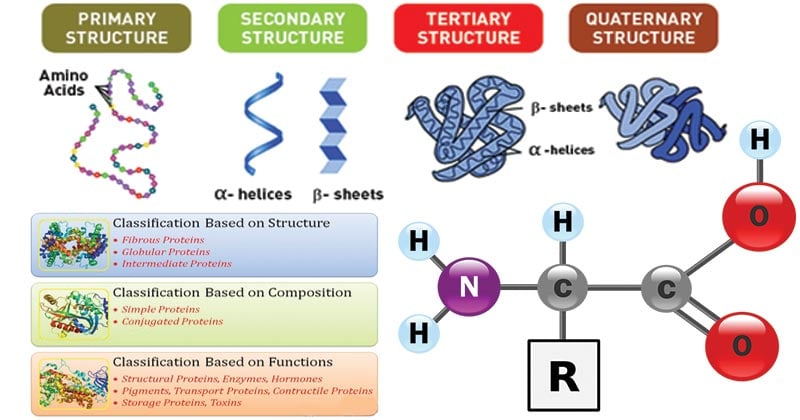PROTEINS
What is PROTEINS?
The term protein comes from the Greek word “proteios,” meaning first place. Proteins are known for having a highly complex polymer. It consists of carbon, hydrogen, oxygen, and nitrogen elements. Its major functions are that it serves as a transporter of molecules in and out of the cell, controlling the speed of chemical reactions; and most especially, it is used for building and repair, which we need to acknowledge since carbohydrates and lipids can’t.
Proteins' building blocks are amino acids. It has 20 different ones. Two amino acids are linked together by peptide bonds.
20 DIFFERENT AMINO ACIDS
How to easily memorize or recognize the 20 different amino acids?
Our instructor gave us a tip on how to easily memorize or recognize the 20 different amino acids. First familiarize yourself with the structure of proteins that are composed of an amino group, a carboxyl group, and an R group. We can determine or characterize that particular amino acid depending on their R substituents because the amino group and carboxyl group remain, but the R-group changes. Through this, we can recognize them based on their five basic groups: if they belong to the non-polar or aliphatic, aromatic, polar or uncharged, positively charged and negatively charged R-group. Now, if we know this, we will be able to name that particular amino acid easily.
How to name amino acid peptide bonds?
First look at the R groups of each amino acid, then recognize the name of it. We can name them in three ways: using full amino acid names, three-letter code abbreviations, or the one-letter code.
How do I determine the amino acid type if it is acidic or basic?
You simply look at the isoelectric point (PI). The isoelectric point (PI) is the pH only. Please take note of this, when the pH is high, it is BASIC. When the pH is low, it is ACIDIC. The neutral isoelectric point is about 6 and neutral pH is about 7.
STRUCTURE OF A PROTEINS
https://microbenotes.com/wp-content/uploads/2018/08/Proteins-Properties-Structure-Classification-and-Functions.jpg
Primary Structure
Proteins that has an amino acid that consist of unique sequence chain
Secondary Structure
Proteins that have amino acids fold into a repeating pattern due to hydrogen bonding of the peptide backbone.
Tertiary Structure
Proteins that have amino acids that form a 3D folding pattern of a protein as a result of side chain interactions.
Quaternary Structure
Protein that consists of lots of amino acids.
How important are proteins in the food industry?
Proteins are vital in the food industry in addition to their biological significance in sustaining the functions of living organisms because they give food a distinct taste, texture, and flavor, all of which are crucial food selection criteria.






Comments
Post a Comment